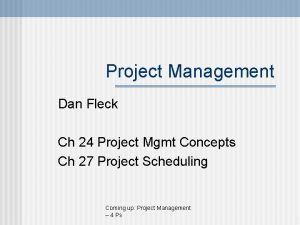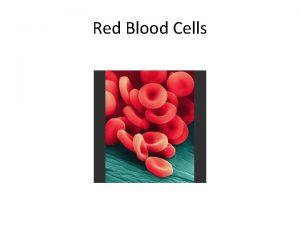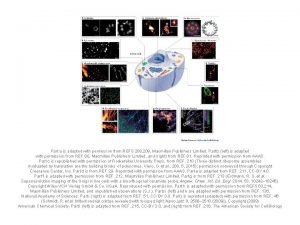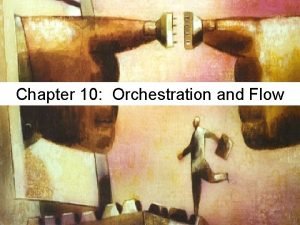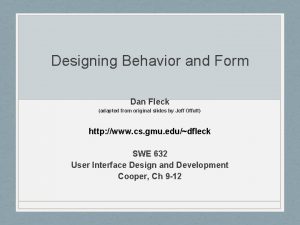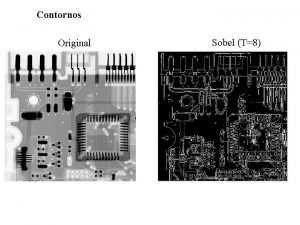Orchestration and Flow Dan Fleck adapted from original








- Slides: 8

Orchestration and Flow Dan Fleck (adapted from original slides by Jeff Offutt) http: //www. cs. gmu. edu/~dfleck SWE 632 User Interface Design and Development Cooper, Ch 10

Flow is a State of Mind • When users are “in the flow”, they exhibit very good concentration and are not easily distracted • Dealing with syntax always interferes with flow • Surprises interrupt flow • Good flow allows users to concentrate on task-semantic knowledge, not syntactic 15 -Sep-21 2 © Dan Fleck, 2012

Orchestration and Flow • Flow: The next thing the interface wants to do is exactly what the user expects • • • Follow users’ mental model Let the user direct the software Don’t talk with the user Keep all related tools available Modeless feedback : The user should not have to respond • Interfaces should be invisible, not cool • It’s easy to make things complicated, it’s hard to make things simple! 15 -Sep-21 3 © Dan Fleck, 2012

Flow Example Do you want to save? Yes No Cancel Help Of course!!! Don’t ask me. Yes, GUIs are differentiated from CLs by being easier, but slower … But, that is not an excuse to design them to be slow! 15 -Sep-21 4 © Dan Fleck, 2012

Orchestration – Stay in Character • First rule in acting : Always be the character you are playing, not yourself (Be the tool!) • Syntax interrupts users’ thinking and annoys them • Good actors become the person they are playing • Good basketball referees disappear Good interfaces disappear and the user can focus only on the problem! 15 -Sep-21 5 © Dan Fleck, 2012

Make the UI Disappear • Less interaction, not more – what do users need? • Make likely choices (probabilities) default, and unlikely choices (possibilities) available • “Do you want to save? ” …. duhhh ! • Give information, not data – 40% saved, not 20, 000 bytes • Software should indicate status visually – active, busy, idle • Don’t use dialogs to report normal behavior • Provide default behavior and mechanisms to change it • Separate commands (print) from configuration (setup) • Don’t ask questions, give users choices • Make dangerous choices hard to reach 15 -Sep-21 6 © Dan Fleck, 2012

Design for the Probable Provide for the Possible • Choices should be based on probability, not logic • Logic : 1 out of a million is still possible … if p then s 1 else s 2 … • Probability : Make the 999, 999 default, make the 1 hard to find • Default should always be to save changes when I exit • Of course I want to save ! • Include an option to discard and exit … in a menu somewhere 15 -Sep-21 7 © Dan Fleck, 2012

Flow Summary To provide good flow, designers must know their users 15 -Sep-21 8 © Dan Fleck, 2012




